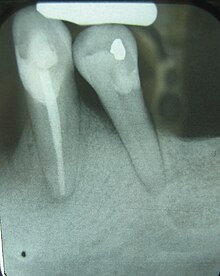We use cookies to help you navigate efficiently and perform certain functions. You will find detailed information about all cookies under each consent category below.
The cookies that are categorised as "Necessary" are stored on your browser as they are essential for enabling the basic functionalities of the site. ...
Necessary cookies are required to enable the basic features of this site, such as providing secure log-in or adjusting your consent preferences. These cookies do not store any personally identifiable data.
Functional cookies help perform certain functionalities like sharing the content of the website on social media platforms, collecting feedback, and other third-party features.
Analytical cookies are used to understand how visitors interact with the website. These cookies help provide information on metrics such as the number of visitors, bounce rate, traffic source, etc.
Performance cookies are used to understand and analyze the key performance indexes of the website which helps in delivering a better user experience for the visitors.
Advertisement cookies are used to provide visitors with customised advertisements based on the pages you visited previously and to analyze the effectiveness of the ad campaigns.
Definition and Types of Occlusal Trauma
- Occlusal trauma is the damage to teeth caused by excessive forces and misalignment.
- There are two types of occlusal trauma: primary and secondary.
- Primary occlusal trauma occurs when excessive forces are placed on teeth.
- Secondary occlusal trauma occurs when normal or excessive forces are placed on teeth with compromised periodontal attachment.
- The distinction between primary and secondary occlusal trauma is important for diagnosis and treatment.
Causes and Effects of Occlusal Trauma
- Excessive occlusal forces can be caused by off-axis loading, parafunctional habits (such as bruxism), and chewing or biting habits involving objects like pens or fingernails.
- Excessive forces can be categorised into duration, frequency, magnitude, and direction.
- Occlusal trauma can lead to tenderness, pain, tooth damage, and tooth movement.
- Traumatic occlusion may cause thickening of the cervical margin of the alveolar bone and widening of the periodontal ligament.
- Widening of the periodontal ligament is a functional adaptation to changes in functional requirements.
- Teeth are constantly subjected to horizontal and vertical occlusal forces.
- Resorption and disappearance of bone occur adjacent to the pressured side of the tooth, while apposition and increased volume occur adjacent to the tensioned side.
- Tooth mobility may develop over time in both primary and secondary occlusal trauma.
- Mobility is more prevalent in secondary occlusal trauma and requires splinting of teeth.
- Occlusal trauma can lead to bone loss and patterns of bone destruction.
Treatment of Occlusal Trauma
- In primary occlusal trauma, the cause of mobility and pain should be eliminated.
- Treatment may involve removing high spots on restored teeth or altering parafunctional habits.
- For bruxers, selective grinding or nightguards can be used to protect teeth from excessive forces.
- In secondary occlusal trauma, splinting of teeth may be necessary to eliminate mobility.
- Treatment of secondary occlusal trauma also involves managing the loss of clinical attachment and bone through surgical periodontal procedures and restoration.
Effects of Occlusal Trauma
- Teeth are constantly subjected to horizontal and vertical occlusal forces.
- Resorption and disappearance of bone occur adjacent to the pressured side of the tooth, while apposition and increased volume occur adjacent to the tensioned side.
- Tooth mobility may develop over time in both primary and secondary occlusal trauma.
- Mobility is more prevalent in secondary occlusal trauma and requires splinting of teeth.
- Occlusal trauma can lead to bone loss and patterns of bone destruction.
References
- Bibb, CA: Occlusal Evaluation and Therapy in the Management of Periodontal Disease.
- Hinrichs, JE: Occlusal The Role of Dental Calculus and Other Predisposing Factors.
- Carranza, FA: Bone Loss and Patterns of Bone Destructions.
- Trauma from Occlusion Handout, Dr. Michael Deasy, Department of Periodontics, NJDS 2007.
- Carranza, FA; Bernard, GW: The Tooth-Supporting Structures.
Occlusal trauma is the damage to teeth when an excessive force is acted upon them and they do not align properly.
| Occlusal trauma | |
|---|---|
 | |
| Secondary occlusal trauma on X-ray film displays two lone-standing mandibular teeth, the lower left first premolar and canine. As the remnants of a once full complement of 16 lower teeth, these two teeth have been alone in opposing the forces associated with mastication for some time, as can be evidenced by the widened PDL surrounding the premolar. Because this trauma is occurring on teeth that have 30-50% bone loss, this would be classified as secondary. | |
| Specialty | Dentistry, ENT surgery |
When the jaws close, for instance during chewing or at rest, the relationship between the opposing teeth is referred to as occlusion. When trauma, disease or dental treatment alters occlusion by changing the biting surface of any of the teeth, the teeth will come together differently, and their occlusion will change. When that change has a negative effect on how the teeth occlude, this may cause tenderness, pain, and damage to or movement of the teeth. This is called traumatic occlusion.
Traumatic occlusion may cause a thickening of the cervical margin of the alveolar bone and widening of the periodontal ligament, although the latter can also be caused by other processes.